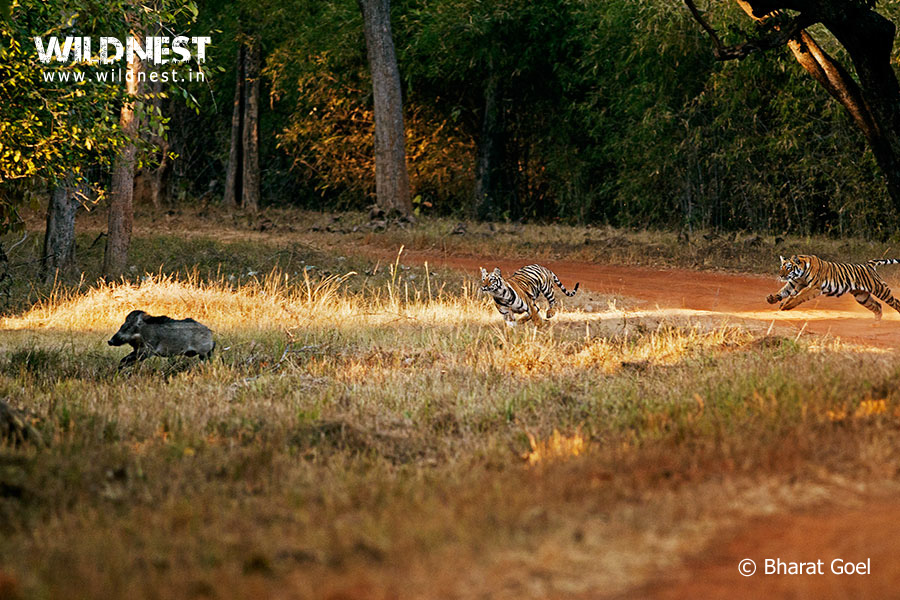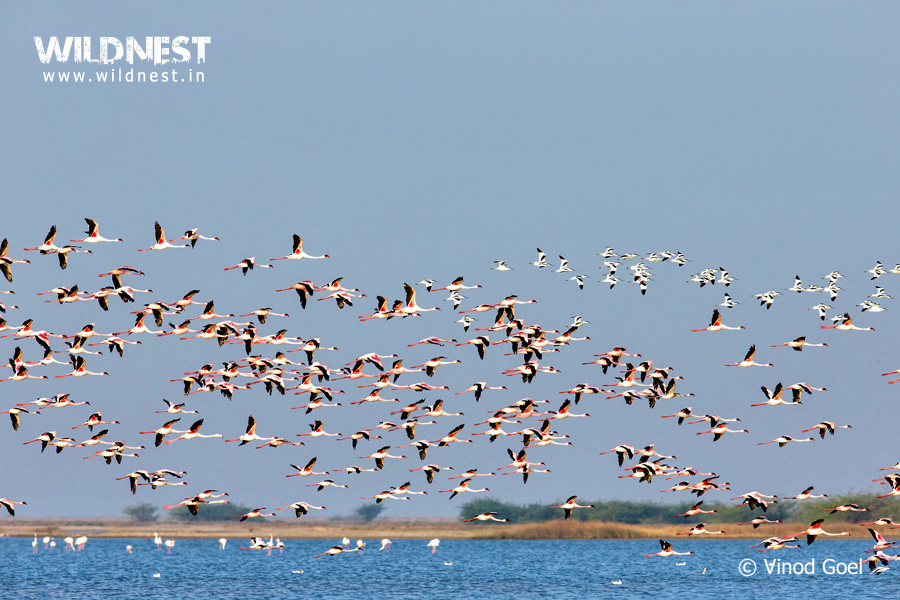About Little Rann of Kutch
Little Rann of Kutch in Gujarat, covering an area of 4954 sq.km is one of the most fascinating and unique landscapes in the entire world. Wild Ass sanctuary located in this Rann is the home of Asiatic Wild Ass or khur, one of the most endangered species in the world. It was established as a sanctuary on 12th January 1973. Little Rann of Kutch is the 15th Biosphere Reserve. Due to its strategic location on bird migration route and its connection with the dynamic Gulf of Kutch, this sanctuary also provides an important feeding, breeding and roosting habitat for a large number of birds. Many parts of the Little Rann of Kutch provide ideal breeding grounds for some of the largest flocks of greater and lesser flamingos. The habitat of Little Rann of Kutch varies from saline desert plains, rocky and thorn scrub, arid grasslands, plateaus to lakes and marshes. There are around 74 elevated plateaus or islands locally called as bets in this sanctuary. It can also be called a large ecotone, transitional land where two different ecosystems gradually meet, in this case marine and terrestrial. The whole area gets flooded during monsoons. The mixing of tidal water from the Gulf of Kutch with the freshwater discharged from the rivers in this area, makes it an important spawning ground for prawns. On the peripherals of the Rann, there are ample salt panes, where salt manufacturers, locally known as ‘Agarias’ prepare salt.
Flora & Fauna
Apart from Asiatic wild ass animals such as black bucks, gazelle, blue bull, desert fox, jackal, jungle cat, hare, wolf, wild boar are also found here. Various lakes provides home to birds such as spotted & Indian sand grouse, Houbara bustard, Francolin partridge, desert wheatear, ducks, steppe eagle, short-toed eagle, vulture, bustard quails, imperial eagle, laggard falcon, flamingos, cranes, pelicans and storks. One of the most threatened birds, the great Indian bustard is also found here in certain protected areas. Vegetation is mostly xerophtic in nature and found only in fringes and bets as saline mudflats don’t support any flora.253 flowering plant species have been listed, out of which the number of species of trees was 18, shrubs-23, climbers/twiners-18, herbs-157 and grasses-37
Little Rann of Kutch Weather
Summers (April – June)
Summers are very hot with average temperatures around 44°C with maximum temperatures going up to 50 °C during day.
Monsoons (July – September)
The amount of rainfall is very less and during the rainy season the area experiences very scanty rainfall.
Winters (October- March)
Winters are very cold especially during late December and January with minimum temperatures approaching or even dropping below freezing.Woolens in sufficient numbers are required during the winter months.
How to reach
By Road
Dhrangadhra (18kms) from Little Rann of Kutch is well connected to other important places in the State by the State Transport Buses as well as other private luxury coaches.
By Rail
Nearest Railway Station is Ahmedabad (130 kms) from Dhrangadhra, has connectivity to all the major cities in India.
By Air
The nearest airports are Ahmedabad (130 kms), Rajkot (145kms) and Bhuj (200 kms) from Dhrangadhra.


